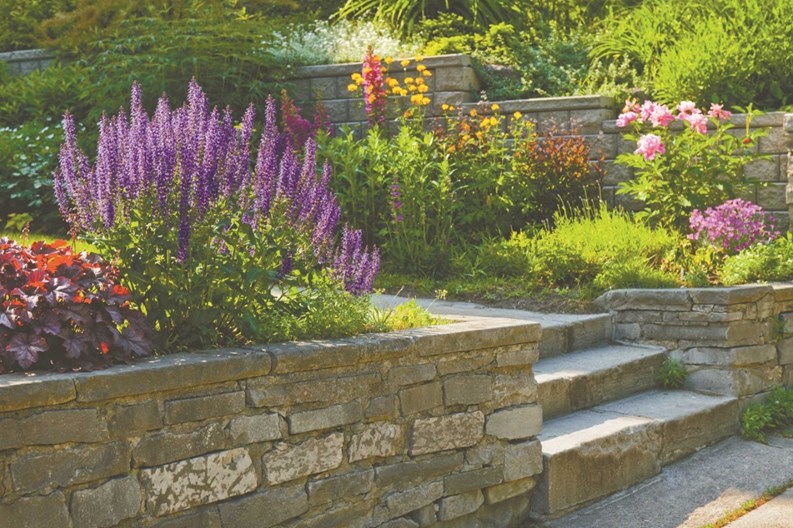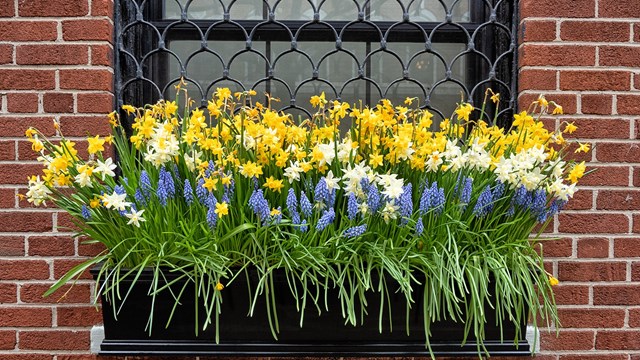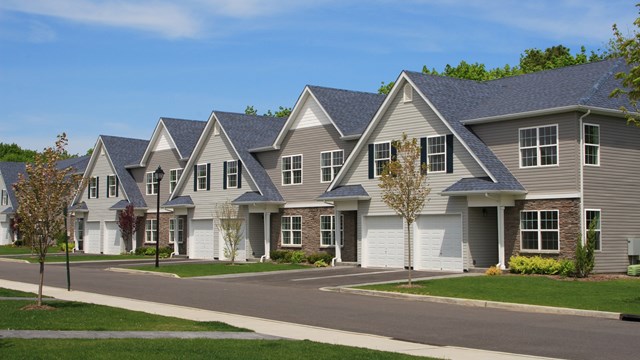Whether you live in a towering mid-block high-rise or a sprawling suburban development, landscaping not only helps a co-op, condo or HOA increase and retain property values, but has a positive impact on residents themselves—beautiful, functional green spaces and plantings increase pride of ownership, influence morale, and just generally make a place more pleasant to be in for owners and visitors alike. And unless there happens to be a master gardener or landscape architect on a building board or grounds committee, chances are that the community's administrators will have to call upon a professional landscape specialist to help make the most of their building's potential.
Before You Make the Call
So you’ve decided to get the help of a landscape professional….what now? There are some things that you can get in order before you make that call for help, things that will make the process much easier and more likely to yield the desired result.
It really helps if the board or committee has an idea of what they are wanting to attain, says Jeff Molizon of The Brickman Group Ltd. in Langhorne, Pennsylvania. For example, he says, determining “the scope of services. Take a clubhouse project, for example…will they be wanting to concentrate on the pool area, or enhancing the front plantings. There are many ways to approach a new landscape design project, and having those goals in mind ahead of time is very helpful.”
“Considering the budget parameters and time line for completion is also important to us,” says Teresa Carleo, the president and CEO of PFI, Inc. (Plant Fantasies, Inc.), a full-service landscape contractor and landscape designer based in New York City.
Early Considerations
“My first consideration when starting any project is to understand the client and what the usage will be,” says Carleo. “What is the intent of this property? Does the owner have a vision? For example, if the owner wants the area to create a sense of calm for reflection, would there a water feature? A lawn? A flowerbed?”
“I first assess the land: the soil, and what abuse the plants are going to get,” adds Mickael Pelow, landscape builder/horticulturist at Mickael D. Pelow Gardens, located in Queens. “Are they going to walk across the grass constantly and are they going to play ball near the planting beds? What is the relationship between people and plants in this particular setting?”
Landscape professionals are also concerned with larger questions, things like sustainability, and are able to take cues from a perspective that’s larger than the property lines of the site where work is to be done, says Pelow. “We should consider the surrounding landscapes and what grows successfully in each site.”
Ultimately, this kind of landscape design is for people, and so that’s how we start the process, says Pelow. “What is the basic need here? That’s my first question. We can make beautiful solutions to many problems, but the basic concerns should be addressed first.”
What’s Your Budget?
One common issue that all of the experts seems to notice is the tendency to underestimate how much landscaping costs. It’s easy to blow the budget on interior renovations and just leave enough money for plants, but that’s only the beginning.
“Boards should be up front about their budget,” says Carleo. “In our experience, building boards and committees usually have a pretty rigid budget, and it’s just a waste of everyone’s time to not set out that information. If there is an existing board or committee, usually the garden has already been built so the committee should make sure that the original intention of the designer is being upheld.”
Price shopping is often part of the process, but simply asking for competitive bids may not be the best way to select a landscaper, says Molizon. “We bring a range of services for specified budgets, but many times boards and committees will not have awarded the contract yet, and this prevents us from going too far into the design process. Once the contract is awarded, we guide the board through all of the decisions that need to be made. Having some of these decisions made beforehand certainly helps the process to move along more smoothly. We can work out the details after the design has been approved.”
“A lot of contractors are leery of putting in a lot of time and investment up front,” continues Molizon, “because they find that many boards or property managers already have in mind who they want to hire. It helps to know what the chances actually are for us to get the work. It would help to know if they are serious about working with us.”
Carleo agrees: “Don’t simply opt for the lowest bid. If the board truly cares about the work being provided it needs to research the company’s experience.”
Managing Expectations
If the scope of the project exceeds the budget or limitations of the space, Pelow recommends implementing the design in phases. “You can do a five-year plan. Many times the overhaul of the entire landscape far exceeds the yearly budget for improvements, but if you spread those costs and the installation out over the course of several years, a lot more can be accomplished. We can also buy materials at a discount in the off-season, if we know that we will be doing the work in the next season, for example.”
Having a long-term project doesn’t condemn the property to a messy muddy construction zone for years on end, continues Pelow. “You can spot plan a five year plan, too. You can spend the majority of the first year’s dollars on high impact areas, like the front planting beds, and develop the other areas as the funds become available.”
There are also many other systems and concerns that need to be considered….things that the board or committee may not know to budget for, including lighting, labor, delivery and irrigation. “The building’s irrigation system is a critical element,” says Carleo. “The board needs to make sure it does not falter and that no one will interfere with the setting of the automatic irrigation. Without proper irrigation, plants will die.”
Life of a Project
While every project is different, you can expect a few basic steps in the process from phone call to installation. Here are some common steps: the initial meeting with designer, foreman; meeting with committee to get a firm understand of client goals, wants, and needs; identifying ballpark budget, to design accordingly; the initial design and presentation; time to tweak the design; creating a formal design proposal; getting approval; scheduling the work; deemolition, removals; final installation; and follow-up maintenance.
“The designer is the one who works with the client, develops the concept, etc.,” says Molizon. “From there if we are awarded the contract, we handle permits and move forward into installation. Our designer is on hand to ensure that the project is installed to the clients’ specifications.”
The permitting process is something that needs to be handled early in the life of a project, and boards and committees can help with this, says Pelow. “Townships and counties all have their own landscaping codes, so it is very helpful for clients to be aware of what their particular codes are. The county clerk should have information on these individual requirements. These are city planning concerns but they affect most landscape work in New Jersey.”
Working With Small Spaces
One of the great opportunities, as well as one of the great challenges of working in an urban environment like Hoboken or Jersey City, is the idiosyncratic outdoor spaces that are found nestled between buildings of different eras, shapes, and heights. There are several techniques that designers can use to make the most of limited areas.
“I give them smaller plants that are hardier, and will survive harsher conditions,” says Pelow. “I also give them a better container….it will last longer, drain better, and will roll.”
A designer can also create depth with layers of planting, or privacy if the neighbors seem a little too near. “If you are going to do one main, striking plant, you can install the other plants or elements in relationship to that one major element, in smaller spaces,” says Pelow.
Property Values
Landscape design and renovation is an investment, and it might help to consider the financial, as well as aesthetic, benefits of overhauling the outside space.
“There have been a lot of studies on what a new landscape brings to a property,” says Molizon, “and I’ve seen anywhere from an 11 to 15 percent increase in value.”
“Almost everything I do is about increasing property value,” says Pelow. “A backyard full of dirt and rubbish adds very little value to a home. A backyard that is an additional room, with additional features, and full of things that are outside activities that aren’t usually done indoors…this has a huge impact on the value of the home. I have seen between 10 to 20 percent increases, on average.”
Denton Tarver is a freelance writer and a frequent contributor to The New Jersey Cooperator.







Leave a Comment